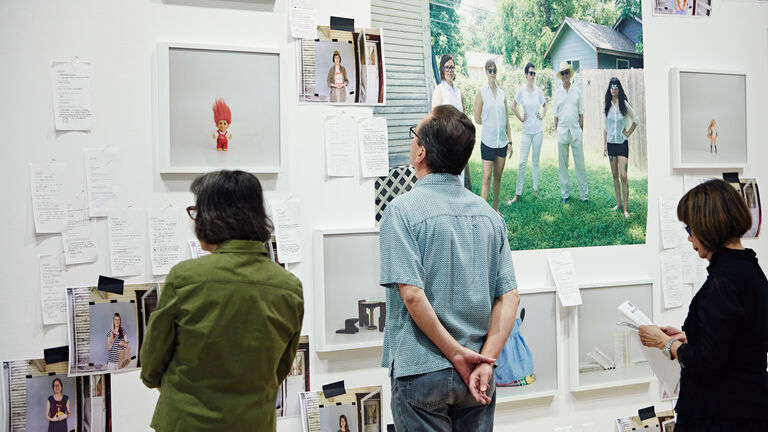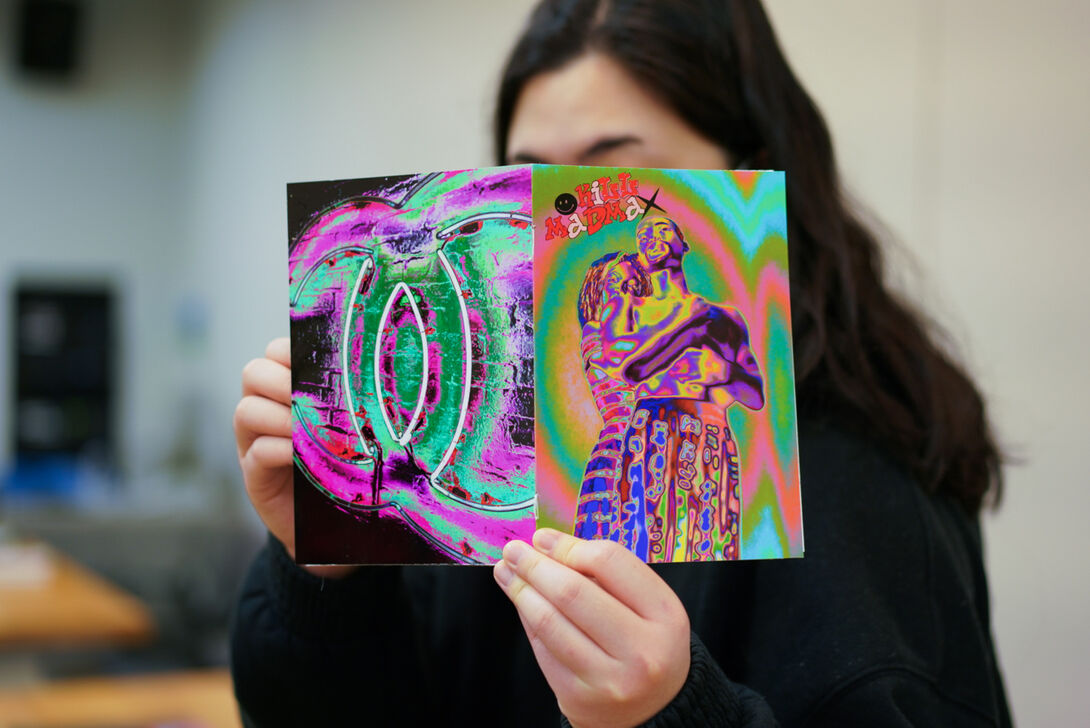
Undergraduate Overview
Undergraduate Overview
Spring 2026 Application Deadline: December 15
Fall 2026 Early Action & Priority Merit Scholarship Deadline: December 15
As an undergraduate student in The Department of Photography at the School of the Art Institute of Chicago (SAIC), you will develop solid mastery over the technical and conceptual complexity that characterizes photography’s past and present while enhancing your ability to discuss your work and the work of others.

Students concentrating on their Bachelor of Fine Arts (BFA) studies in Photography will:
- Learn from distinguished, practicing artists with a variety of approaches to photography.
- Collaborate with graduate students and peers to create an annual departmental catalog.
- Participate in a 3-credit capstone spine class geared towards preparation for the senior Bachelor of Fine Arts thesis exhibition.
Undergraduate classes offer a natural progression for all students.
- Beginning classes present basic practical skills and strategies for conceptual thinking.
- Intermediate classes are in-depth studies of specific conceptual issues or techniques.
- Advanced classes present opportunities for more self-directed projects, group seminars, and frequent private consultations with instructors.
Course titles and topics––over 30 offerings each semester––range from Intro to Photography to Lighting Fundamentals, Surrealism and Photography, Digital Light Projections, Fashion Photography, Advanced Post-Production, and more, allowing students to delve deeply into an area of interest, find synergies with departments and mediums across the school, or explore and master a wide range of techniques and equipment.
Scholarships
In addition to merit scholarships awarded at the time of admission, each year, a senior student working in the photography department is selected by the faculty for the Fred Endsley scholarship, an unrestricted one-time $1,000 cash award which can be used to create new work or prepare for the senior exhibition.
Undergraduate Admissions Requirements & Curriculum
-
To apply to the School of the Art Institute of Chicago (SAIC), you will need to fill out an application and submit your transcripts, artist's statement, and letters of recommendation. And most importantly, we require a portfolio of your best and most recent work—work that will give us a sense of you, your interests, and your willingness to explore, experiment, and think beyond technical art, design, and writing skills.
In order to apply, please submit the following items:
Bachelor of Fine Arts in Studio Portfolio
Submit 10–15 pieces of your best and most recent work. We will review your portfolio and application materials for merit scholarship once you have been admitted to SAIC.
When compiling a portfolio, you may concentrate your work in a single discipline or show work in a breadth of media. The portfolio may include drawings, prints, photographs, paintings, film, video, audio recordings, sculpture, ceramics, fashion designs, graphic design, furniture, objects, architectural designs, websites, video games, sketchbooks, scripts, storyboards, screenplays, zines, or any combination of the above.
Learn more about applying to SAIC's Bachelor of Fine Arts in Studio, or view our portfolio preparation guide for more information.
-
Studio 69 - CP 1010 Core Studio Practice I (3)
- CP 1011 Core Studio Practice II (3)
- CP 1020 Research Studio I (3)
- CP 1022 Research Studio II (3)
- SOPHSEM 2900 (3)
- PROFPRAC 39XX (3)
- CAPSTONE 49XX (3)
- Studio Electives (48)
Art History 15 - ARTHI 1001 World Cultures/Civilizations: Pre-History—19th Century Art and Architecture (3)
- Additional Art History Course at 1000-level (e.g., ARTHI 1002) (3)
- Art History Electives at 2000-, 3000-, or 4000-level (9)
Liberal Arts 30 - ENGLISH 1001 First Year Seminar I (3)
- ENGLISH 1005 First Year Seminar II (3)
- Natural Science (6)
- Social Science (6)
- Humanities (6)
- Liberal Arts Electives (6)
- Any of the above Liberal Arts or certain AAP or EIS
General Electives 6 - Studio, Art History, Liberal Arts, AAP, or EIS
Total Credit Hours 120 * BFA students must complete at least two classes designated as "off campus study." These classes can also fulfill any of the requirements listed above and be from any of the divisions (Art History, Studio, Liberal Arts, or General Electives).
BFA in Studio with Thesis Option (Liberal Arts or Visual Critical Studies): Students interested in pursuing the BFA in Studio with the Thesis Option (Liberal Arts or Visual Critical Studies) should contact their academic advisor for details about eligibility, program requirements, and the application process.
Total credits required for minimum residency 66 Minimum Studio credit 42
Course Listing
Upcoming Admissions Events
Meet with us, learn more about SAIC and our curriculum, and get feedback on your work. LEARN MORE.
Get More Info
Sign up for email updates to learn more about our undergraduate programs.